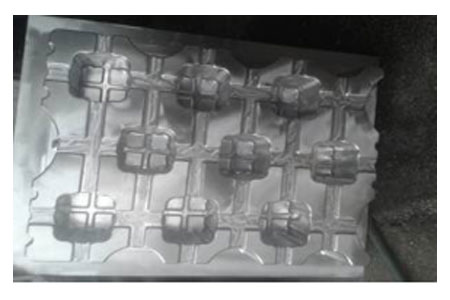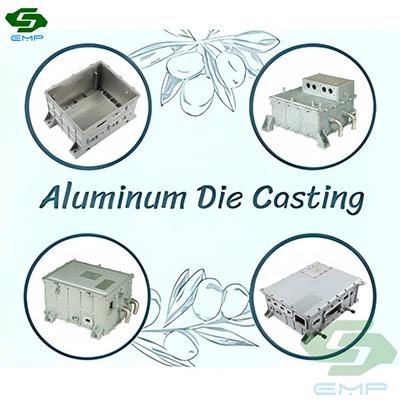

There are many factors that cause the failure of the die-casting mold, including external factors (such as the casting temperature, whether the mold is preheated, the amount of water-based paint sprayed, whether the tonnage of the die-casting machine is matched, the die-casting pressure is too high, the inner gate speed is too fast, the cooling water opening is not synchronized with the die casting production, the type of die casting material and the level of Fe composition, the size and shape of the casting, the size of the wall thickness, the type of coating, etc.).
There are also internal factors (such as the metallurgical quality of the material of the die-casting mold itself, the forging process of the blank, the rationality of the structural design of the die-casting mold, the rationality of the design of the gating system, the internal stress generated during the machining of the mold machine (electrical machining), and the heat treatment of the die-casting mold. The process includes various matching accuracy and finish requirements, etc.).
If the die-casting mold fails at an early stage, it is necessary to find out what internal or external causes are in order to improve it in the future.
Under the action of the injection force, the die-casting mold will crack at the weakest point, especially if the scribe marks or electrical machining marks on the molding surface of the die-casting mold are not polished, or the formed clear corners will be the first to appear micro cracks.
When there is a brittle phase at the grain boundary or the grains are coarse, it is easy to fracture, and the crack expands quickly during brittle fracture, which is a very dangerous factor for the fracture failure of the die-casting mold.
For this reason, on the one hand, the scratches and electrical machining marks on the mold surface must be polished, even if it is in the gating system, it must be polished. In addition, the die-casting mold materials used are required to have high strength, good plasticity, good impact toughness and fracture toughness.
Commonly used die-casting alloys include zinc alloy, aluminum alloy, magnesium alloy and copper alloy, as well as pure aluminum die-casting. Zn, Al, Mg are relatively active metal elements, and they have a good affinity with die-casting mold materials, especially the Al bite mold.
When the hardness of the die-casting mold is high, the corrosion resistance is better, and if there are soft spots on the molding surface, the corrosion resistance is not good.
However, in actual production, the corrosion is only a local part of the die-casting mold. For example, the parts (core, cavity) that are directly eroded by the inner gate are prone to corrosion, and the aluminum alloy is prone to sticking to the mold where the hardness is soft.
During the production of die-casting, the die-casting mold is repeatedly subjected to the action of cooling and heating, the molding surface and its interior are deformed, and they are involved in each other, resulting in repeated thermal stress, resulting in damage to the structure and loss of toughness, causing the appearance of micro-cracks, and continuing extension.
Once the crack expands, the molten metal is squeezed in, and repeated mechanical stress will accelerate the expansion of the crack. For this reason, on the one hand, the mold must be fully preheated at the beginning of the die casting.
In addition, the die-casting mold must be kept within a certain working temperature range during the die-casting production process to avoid early cracking failure.
At the same time, it is necessary to ensure that the internal causes of the die-casting molds before production and during manufacturing do not have problems, because most of the die-casting mold failures in actual production are thermal fatigue crack failures.


